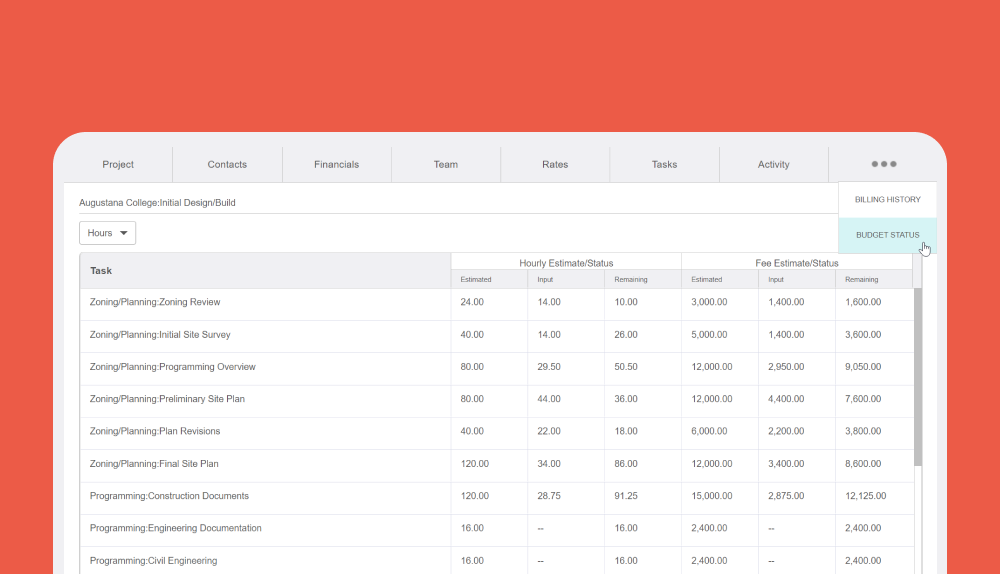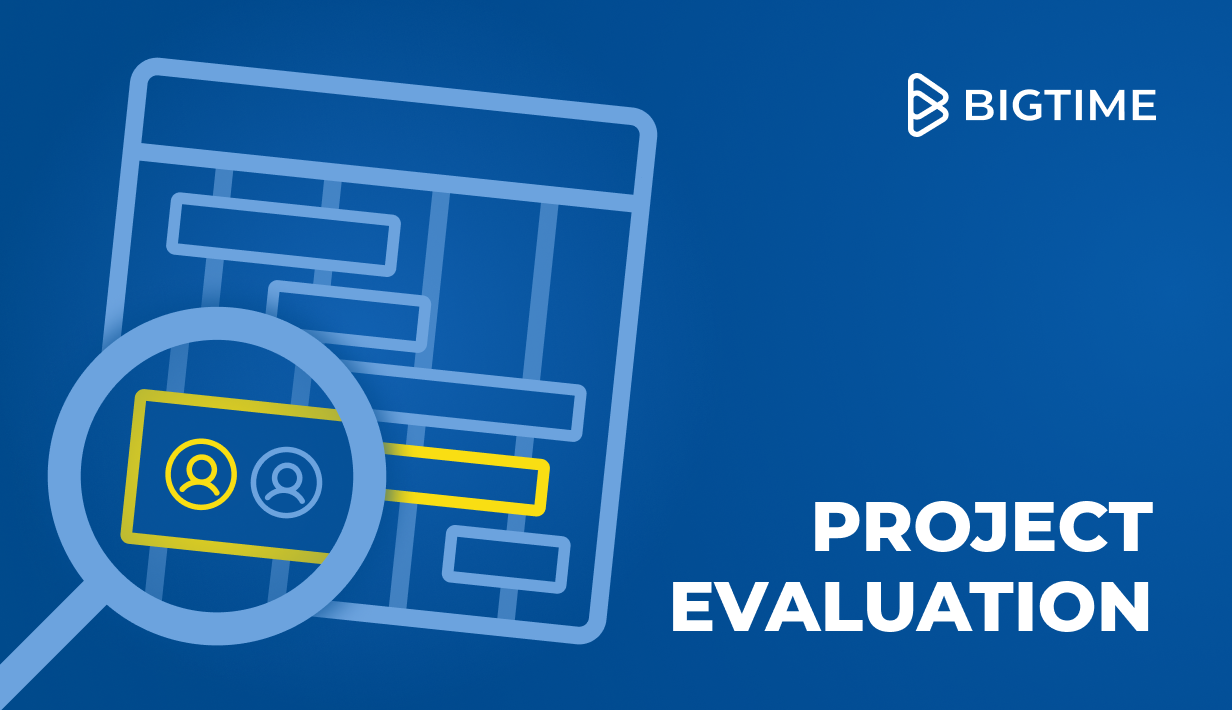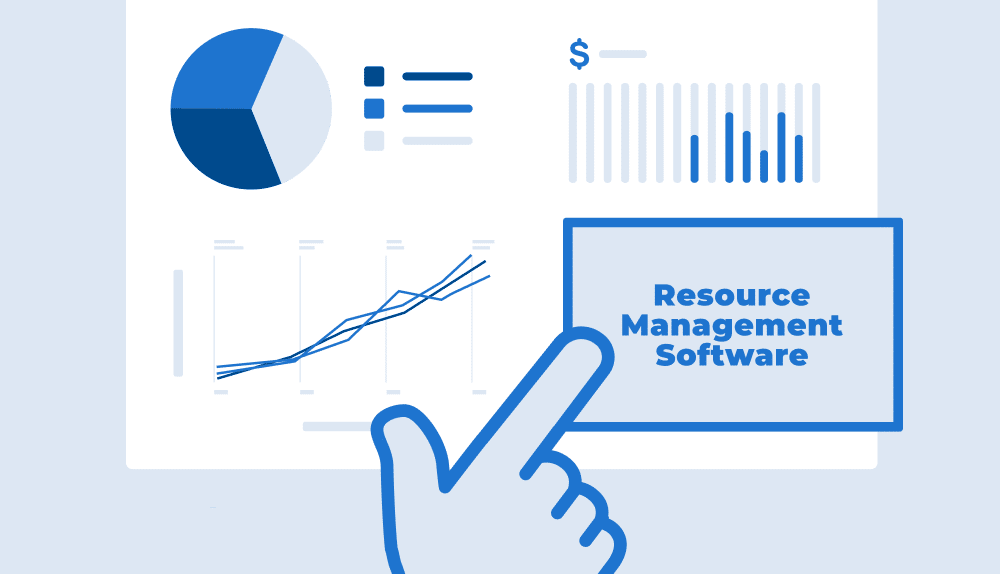Last update: July 7, 2025
Effective resource allocation is about more than just delivering projects and avoiding schedule conflicts. This essential part of resource management is essential for achieving your completing project tasks – and here’s how you can use it to ensure the success of your project management even with limited resources.
What’s in this article?
- What is the definition of resource allocation?
- Who should be responsible for the process?
- What is a perfect resource allocation process?
- What are the most popular resource allocation strategies?
- The contents of the final resource allocation plan
- What are the common challenges in allocating resources?
Resource Allocation – Definition and Meaning
Resource allocation is the process of strategically distributing an organization’s available assets, such as personnel, finances, technology, and time, to optimize efficiency and achieve business objectives. In professional services firms, this involves assigning the right professionals to the right projects while balancing client expectations, employee capacity, and profitability.
Effective resource allocation requires careful planning, real-time adjustments, and data-driven insights to ensure optimal utilization, minimize bottlenecks, and enhance overall business performance. When executed well, it improves project outcomes, maximizes revenue potential, and supports long-term growth.
What Are The Benefits of Resource Allocation?
Effective resource allocation is critical for professional services firms, ensuring that talent, time, and budget are strategically deployed to maximize efficiency and profitability. Key benefits include:
- Optimized Utilization – Ensures that available resources, particularly skilled professionals, are fully utilized without being overburdened, reducing downtime and inefficiencies.
- Improved Profitability – Aligning the right resources with the right projects enhances productivity, minimizes waste, and increases revenue potential.
- Increased Agility – A well-structured allocation process allows firms to quickly adapt to changing client demands, project requirements, and market conditions.
- Better Decision-Making – Data-driven allocation enables leadership to make informed decisions about staffing, budgeting, and project prioritization, reducing risks and optimizing results.
- Reduced Costs – Prevents unnecessary spending by ensuring resources are used efficiently, avoiding last-minute hiring, underutilized personnel, or misallocated budgets.
An example of resource allocation and utilization management in BigTime Foresight
Which Manager Should Allocate Resources?
Resource allocation affects the whole organization and, as such, it is commonly considered to be a cross-functional responsibility. The contribution of different roles to this process also depends on the size of the organization and its structure. Usually, the process is managed by:
- Project or resource manager, who is responsible for day-to-day resource allocation.
- Operations or PMO, who lays a broader, more strategic role—setting resource planning frameworks and aligning resource capacity with business goals.
- Executive stakeholders, who are often involved in resource decisions for strategic priorities, especially when high-impact projects or hiring decisions are involved.
Resource Allocation Process – How to Allocate Resources on a Project?
Making resource allocation decisions is never easy. Fortunately, there are some proven resource scheduling processes you can follow to guarantee project success without a single negative feedback from project managers. Here’s what a perfect resource allocation process looks like!
Step 1: Define Objectives For Resource Planning
Before allocating resources, the organization must establish clear objectives. These could include maximizing profitability, improving client satisfaction, enhancing operational efficiency, or scaling service delivery. Resource allocation should align with these goals to ensure long-term success.
Step 2: Assess Available Resources
Conduct a comprehensive inventory of all available resources in your project management, including:
- Personnel – Skills, expertise, experience, and availability.
- Budget – Financial constraints and project funding.
- Technology & Tools – Software, infrastructure, and digital assets.
- Time & Capacity – Employee workload and project timelines.
This assessment helps prevent bottlenecks, avoid overcommitments, and ensure resources are utilized efficiently.
If your company has limited resources for various reasons, remember to account for their utilization rates and absences before you begin planning. It’s a common mistake project managers often make!
Step 3: Forecast Demand & Workload
Using historical data and project insights, forecast resource demand for upcoming projects. This includes:
- Identifying project scope, complexity, and duration. If possible, creating project timelines is also recommended.
- Analyzing peak workload periods and potential resource shortages.
- Evaluating potential new business opportunities and their resource impact.
- Communicating with projects managers in case of any unresolved problems or questions.
Accurate forecasting based on historical information from multiple projects allows firms to proactively plan and allocate resources rather than react to shortages or inefficiencies, putting less stress on team members, as well as project managers.
Step 4: Develop an Allocation Strategy
With clear objectives and demand forecasts in place, the next step is to develop an allocation strategy. This involves:
- Matching personnel to projects based on expertise, availability, and workload.
- Balancing workloads to prevent employee burnout and inefficiencies.
- Aligning resource allocation with financial considerations to maximize profitability.
At this stage, firms may also consider outsourcing, hiring temporary staff, or redistributing resources to maintain flexibility.

Resource Allocation Strategies – Allocate Resources with Zero Errors
Resource allocation strategies vary depending on business objectives, industry demands, and organizational priorities. In professional services firms, selecting the right approach ensures optimal efficiency, profitability, and workforce engagement. That is why, to allocate resources with no errors, project managers need to choose the right resource planning models.
The most common resource allocation strategies include:
Priority-Based Resource Allocation
This is one of the resource allocation strategies that assign resources based on project or client importance, ensuring that high-value work receives top priority. Organizations classify projects based on strategic significance, profitability, or client impact, directing the best talent and resources accordingly.
Best for: Firms managing multiple projects with varying levels of strategic importance, such as consulting or legal services.
Challenges: Lower-priority projects may suffer from under-resourcing, potentially affecting overall client satisfaction.
Demand-Driven Resource Allocation
In this approach, resource managers allocate resources dynamically based on real-time project demands and workload fluctuations. This ensures that available capacity is used efficiently while maintaining agility to shift resources as needed. However, without monitoring resource utilization, this method might contribute to growing employee bench.
Best for: Firms with variable project workloads, such as IT services, marketing agencies, or engineering consultancies.
Challenges: Requires robust resource management tools and flexible teams to respond to shifting priorities effectively.
Skill-Based Resource Allocation
This is one of resource allocation strategies in which resource manager assigns team members based on expertise, ensuring that the most qualified professionals handle specific tasks. It helps maintain quality standards and improves project outcomes by aligning skillsets with project requirements.
Best for: Professional services firms where specialized knowledge is crucial, such as law firms, accounting firms, and management consultancies, can allocate resources using this strategy.
Challenges: Highly skilled employees may become overburdened, leading to burnout or inefficiencies.
Cost-Based Resource Allocation
Organizations following a cost-focused approach allocate resources with strict budgetary control, optimizing expenses to maximize profitability. This involves assessing the cost-effectiveness of different resource allocations and ensuring financial sustainability.
Best for: Firms aiming to improve financial efficiency and profitability, such as startups, outsourcing firms, or cost-sensitive industries.
Challenges: Prioritizing cost-cutting over quality may impact service delivery and employee morale.
Still, some tools can help you combine finances and resources under one roof, guaranteeing optimal workload distrubution and team morale while boosting profitability. BigTime Foresight is one of such tools!
Just-in-Time (JIT) Resource Allocation
Inspired by lean management principles, JIT resource allocation involves deploying resources only when they are immediately needed, reducing waste and inefficiencies. It helps optimize utilization while minimizing idle time.
Best for: Firms looking to maximize efficiency, such as agile software development teams or lean consulting firms.
Challenges: Requires precise resource forecasting and quick decision-making to avoid delays or shortages in resource allocation.
Hybrid Resource Allocation
Many firms use a combination of strategies, tailoring resource allocation based on project type, budget constraints, skill requirements, and strategic priorities. This flexible approach balances cost efficiency, quality, and agility.
Best for: Large firms with diverse service offerings, such as multidisciplinary consulting firms or global professional services organizations.
Challenges: Managing multiple allocation strategies requires sophisticated tracking tools and strong decision-making frameworks.
Step 5: Assign Resources & Implement the Plan
Once the allocation strategy is finalized, resources are assigned to projects. Implementation should be flexible, allowing for real-time adjustments as project scope changes or new operatios appear. Best practices include:
- Using resource management software for transparent tracking.
- Communicating allocations clearly to all stakeholders.
- Informing all the stakeholders, including project team, about any changes to project plan made by resource managers.
- Double-checking project budgets to see if any additional resources impacted the profitability of a given operation.
- Ensuring accountability for resource usage and performance.
This phase is crucial for ensuring that resources are effectively utilized and that employees are engaged in meaningful, high-impact work.
Step 7: Adjust & Optimize as Needed
Resource allocation is an ongoing process that requires continuous optimization. As project requirements change, more physical resources or team members might be required in various operations. Project managers should address such problems on a regular basis, ensuring effective resource allocation.
Based on real-time feedback, while monitoring resource allocation, firms should:
- Reallocate resources to address shifting priorities or problems.
- Adjust staffing levels or budget allocations to optimize efficiency.
- Implement lessons learned to refine future resource planning.
By maintaining flexibility, firms can quickly adapt to changes in demand planning, market conditions, or internal constraints without disrupting business operations.
Tips For Flawless Resource Allocation
The perfect resource allocation process is just a part of the success of your resource planning. Here are a few more tips that can help you master the process.
- Start with clear project priorities. When priorities are clear, it’s easier to allocate resources with confidence and avoid conflicts.
- Use a single source of truth for your data. Real-time visibility eliminates guesswork and supports data-driven decisions.
- Monitor workload. Track utilization rates to identify under- or over-allocated team members.
- Plan ahead. Use historical data and upcoming pipeline insights to forecast future resource needs. This helps prevent last-minute scrambling!
- Build flexibility into plans. Design your resource allocation with built-in flexibility so you can pivot quickly without disrupting other work.
- Involve team leads in resource allocation. They can flag hidden capacity, upcoming absences, or development goals you might miss.
- Use scenario planning. Run “what-if” scenarios to prepare for potential shifts in timelines, scope, or team availability. This gives you contingency plans and minimizes disruption.
What Should a Final Resource Allocation Plan Contain?
A well-structured resource allocation plan is essential for optimizing efficiency, ensuring project success, and maximizing profitability in professional services firms. It should also act as a complete summary of your resource allocation process and act as a main source of information on resource availability, project resources and project timelines.
Therefore, a perfect resource allocation plan should include the following components:
Objectives and Priorities
A resource allocation plan should start with a clear definition of objectives and priorities, including critical tasks, ensuring alignment with the company’s strategic goals and project scope of all the operations. This includes identifying key business drivers, such as profitability, client satisfaction, or operational efficiency that will shape allocation decisions and help avoid project failures.
Resource Availability
Project delays are often caused by underestimating resource utilization of key human resources. For that reason, a comprehensive inventory of resources is essential, detailing personnel, budgets, technology, and infrastructure. It should also assess resource availability and constraints to prevent schedule conflicts and inefficiencies. Alongside this, the plan must incorporate project and workload forecasting, analyzing upcoming demands to anticipate resource needs and potential gaps.
Allocation Strategy
The allocation strategy should define how resources will be assigned based on expertise, project requirements, deadlines, and workload balance to ensure optimal project performance. It must be flexible enough to adapt to changing priorities and unexpected resources required due to changes in project scope. Budget and financial considerations also play a critical role, ensuring that resource allocation aligns with cost constraints and profitability goals while tracking expenses related to personnel, technology, and operations.
Risk Assessment
Risk assessment is another crucial component of resource management plan, identifying potential challenges such as resource shortages, project delays, or scope changes. Contingency plans should be in place to address these risks and allow for real-time adjustments. Performance monitoring is necessary to track efficiency, utilization rates, and project outcomes. Key performance indicators (KPIs) help assess the effectiveness of allocations, and continuous adjustments should be made based on data insights and feedback.
Tip: Start risk assessment with creating a backup resource allocation plan to avoid creating the document from the scratch once again!
Technology and Tools
If you want to allocate resources effectively, you will need the right resource management tools or a project management software.
Such resource management software and data analytics can improve planning and decision-making while ensuring integration with existing systems. Finally, strong communication and stakeholder alignment guaranteed by such tools encompassing multiple projects ensure transparency, keeping leadership, project managers, and employees informed about resource distribution. Collaboration among teams is key to maintaining a balance between business needs and available capabilities.

What Are The Common Resource Allocation Challenges?
Unfortunately, the resource allocation process sometimes doesn’t go as planned. Common resource allocation challenges managers might face include:
Conflicting Allocations
The most experienced employee is double-booked, again… That is one of the most common challenges in allocating resources. When multiple teams or departments compete for the same resources, it becomes difficult to prioritize. Without clear governance or strategic alignment, projects may suffer delays or get under-resourced, and the employee morale might drop, fueling higher turnover rates.
Limited Visibility into Resource Availability
It is difficult not to make an error without knowing when one is made. Without a clear view of resource availability, this is often the case. The lack of information on time offs, absences and other engagements might cause resource managers to unknowingly double-book staff or assign work to unavailable employees, resulting in unexpected project delays.
Skills Mismatch
Even the most dedicated employee might not be able to help your project if he has to learn the necessary technologies from scratch. This results in inefficiencies, rework, or the need to bring in expensive external help. A designated resource management software with up-to-date skill matching can solve that problem in seconds!
Poor Forecasting
Projects come and go – and so does your employees. Without knowing the future operational needs of your business, as well as future capacity of your employees, your plans might quickly crumble. This might lead to either underutilization (bench time) or resource shortages that delay delivery.
Last-Minute Changes and Scope Creep
A slight change in your project scope is – more often than not – a root cause of the butterfly effect. Unanticipated scope expansions or shifting priorities can throw allocation plans into disarray and affect both the team’s morale and customer satisfaction rates.
How Can Resource Management Software Help Me Allocate Resources?
No matter what are your project’s objectives, project budgets or how many resources you need to allocate – project management software can help you manage all the available resources with no errors and create an effective allocation strategy in minutes.
Resource management software can help you:
- Improve resource visibility across all projects.
- Automate scheduling an assignment – the best resource management systems use AI to do that.
- Avoid errors with overbooking notifications
- Get a complete overview of utilization rates and, consequently, capacity management
- Forecast resources based on current and future project pipeline
- Control project budgets and monitor its use for the entire duration of a project
- Prepare for different scenarios with advanced forecasts and what-if analysis.
- Monitor performance and optimize key processes, including project planning and resource allocation.
By leveraging these features, resource management software enhances decision-making, optimizes workforce utilization, and drives overall business performance.
Resource Allocation Made Simple With BigTime
BigTime Foresight has all of that – and more.
BigTime Foresight is a comprehensive resource management solution that goes beyond standard allocation tools by integrating AI-powered forecasting, automated scheduling, real-time workload balancing, and financial tracking into a single platform.
It provides centralized visibility of all resources, ensuring optimal utilization while preventing bottlenecks. Its demand forecasting and scenario planning capabilities allow firms to predict future workload needs, optimizing staffing and project timelines proactively. With budget monitoring and cost control features, organizations can track profitability in real-time, while its compliance and risk management functions help mitigate legal and operational risks. In short, it’s all you will ever need for resource allocation.
Book a demo now to see what BigTime Foresight can do for you!




